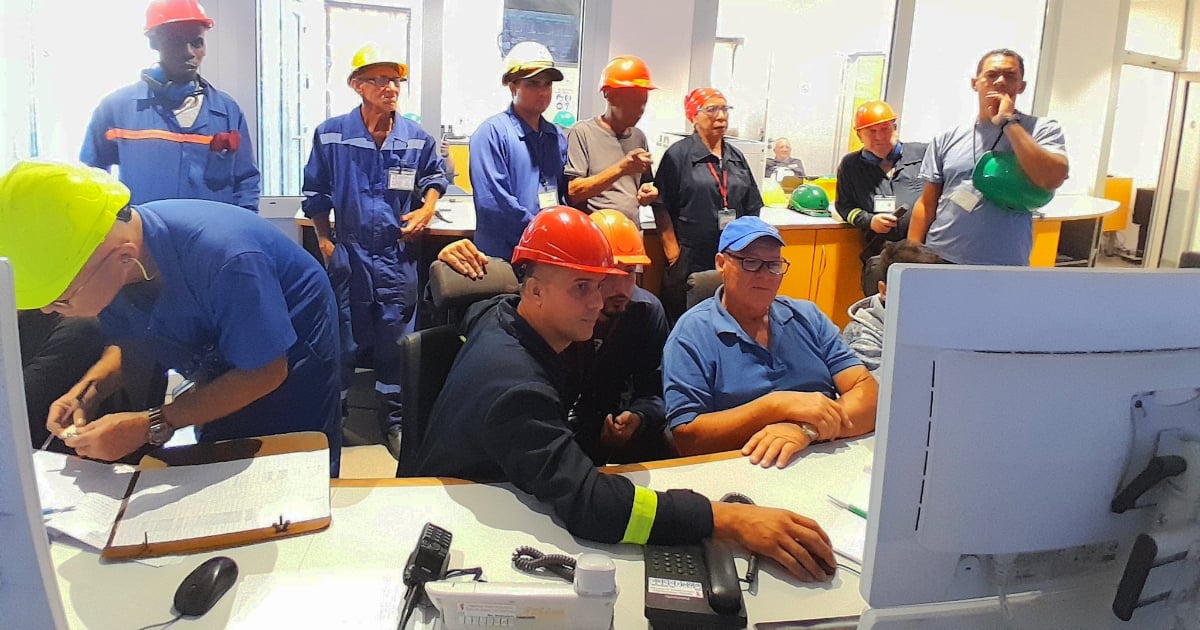After nearly five months of intensive maintenance and costly repairs, Unit 3 of the "Carlos Manuel de Céspedes" Thermoelectric Plant in Cienfuegos was reconnected to Cuba's National Electric System (SEN) on May 1, 2025. The Cuban regime hailed this event as a "technical victory" amidst the severe energy crisis suffocating the island. However, a mere four days later, the unit was again offline due to a boiler leak, highlighting the dire state of Cuba's electrical infrastructure.
Back in December 2024, the unit was disconnected to begin major repairs after experiencing a series of technical failures that repeatedly removed it from the SEN. During early 2025, officials intermittently updated the public on the progress of the repairs, which included hydraulic tests, safety valve inspections, system clean-ups, and turbine flushing. The synchronization date was postponed multiple times, all while the nation endured increasingly lengthy blackouts.
The Pattern of Failures Continues
This isn't the first time Unit 3 has resumed operations only to fail shortly after. According to a report by CiberCuba on April 26, this unit has been among the most unreliable components of the country's thermoelectric system. In October 2024, it was offline for more than ten days due to an unexplained malfunction. It faced cooling system issues in November, leading to its final disconnection in December for extensive maintenance.
On April 25, 2025, just before reconnecting to the SEN, state media reported that the power plant had commenced technical tests, including checks of the main valves. By May 1, its integration into the system was declared, accompanied by triumphant headlines lauding "collective efforts," while ignoring the prolonged repair period and widespread blackouts endured by citizens.
The official celebration was short-lived: on May 5, state media revealed that Unit 3 had exited the SEN again, just four days after resuming service, due to a boiler leak. This incident caused an immediate impact of over 1,700 MW, with blackouts lasting up to 20 hours reported in provinces including Matanzas, Granma, and Santiago de Cuba.
A Collapsing System Lacking Solutions
This episode underscores the extreme vulnerability of Cuba's electrical grid. The country's thermoelectric plants operate with outdated equipment, often lacking proper spare parts, and suffer from poor maintenance conditions. Compounding these issues are logistical challenges in fuel procurement, generation losses in the distribution network, and a complete lack of transparency in national energy planning.
The regime has chosen to portray the brief reactivation of repaired units as technical successes, downplaying the structural collapse they represent. The official narrative overlooks the fact that the operational time of repaired units is often shorter than their maintenance period. In the case of Unit 3 in Cienfuegos, the stark reality is evident: over 120 days of repairs for just four days of operation.
Enduring Energy Crisis Without Resolution
The fleeting synchronization of this unit not only proved inefficient but also highlighted an energy management approach characterized by improvisation, institutional secrecy, and a lack of technical capability to adequately meet national demand. Although state media celebrated the re-connection of Cienfuegos' thermoelectric unit to the SEN this past Friday, the persistent breakdowns, logistical chaos of the SEN, and the absence of real investment capacity to modernize the national energy infrastructure place Cuba in an energy crisis that is not temporary but rather structural and ongoing.
Meanwhile, Cubans continue to endure blackouts exceeding 20 hours a day, with scant explanations and no visible alternatives. The Cienfuegos thermo plant, far from being part of the solution, has become the starkest symbol of the collapse of Cuba's electrical system.
Understanding Cuba's Energy Crisis
What led to the recent shutdown of Unit 3 in Cienfuegos?
The recent shutdown of Unit 3 in Cienfuegos was due to a boiler leak, occurring just four days after it was reconnected to the National Electric System.
How does the Cuban regime portray the brief reactivations of power units?
The Cuban regime presents the short-lived reactivations of repaired units as technical victories, downplaying the broader context of structural failure within the energy system.
What challenges are faced by Cuba's thermoelectric plants?
Cuba's thermoelectric plants struggle with outdated equipment, insufficient spare parts, poor maintenance, logistical issues in fuel acquisition, and lack of transparency in energy planning.
What is the impact of these energy issues on Cuban citizens?
These energy issues result in prolonged blackouts, sometimes exceeding 20 hours a day, affecting daily life and economic activities across Cuba.
